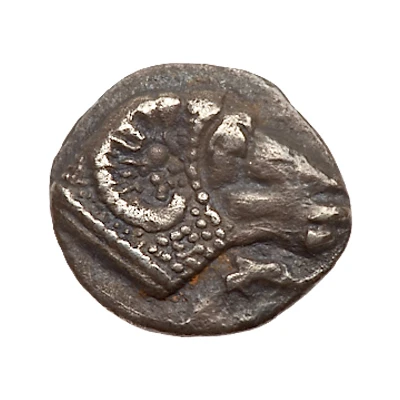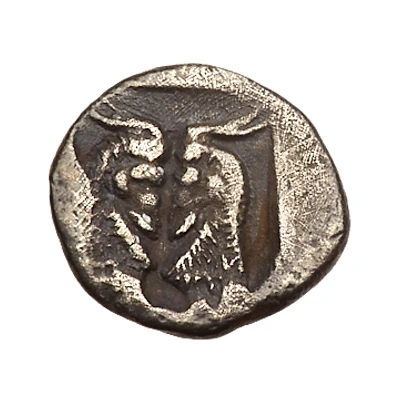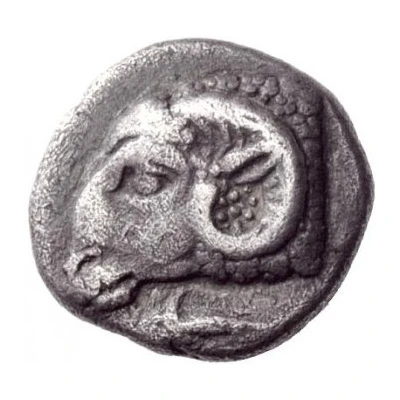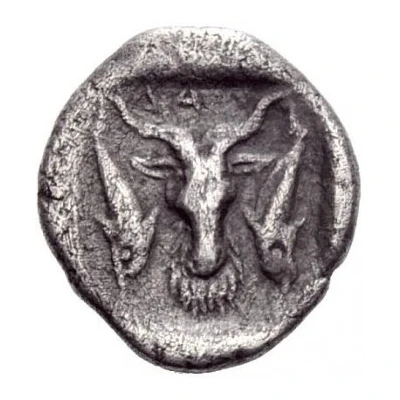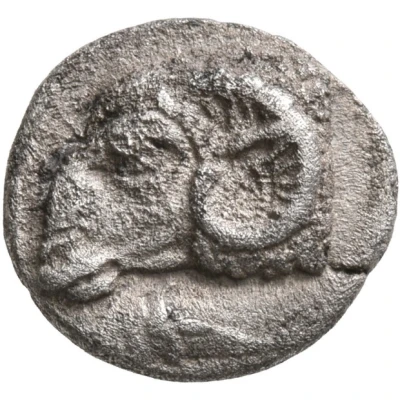
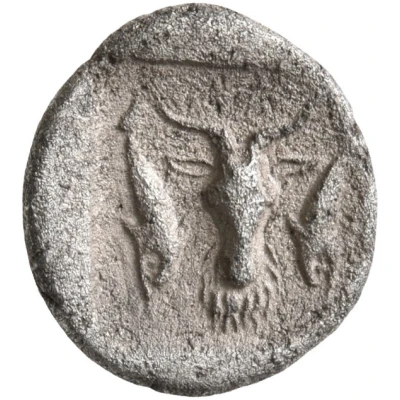

© Leu Numismatik
Trihemiobol 450 BC - 400 BC
| Silver | 1.2 g | 12 mm |
| Issuer | Delphi (Phokis) |
|---|---|
| Type | Standard circulation coin |
| Years | 450 BC - 400 BC |
| Value | Trihemiobol (¼) |
| Currency | Drachm |
| Composition | Silver |
| Weight | 1.2 g |
| Diameter | 12 mm |
| Shape | Round (irregular) |
| Technique | Hammered, Incuse |
| Demonetized | Yes |
| Updated | 2024-10-10 |
| Numista | N#284590 |
|---|---|
| Rarity index | 100% |
Reverse
Head of goat facing; dolphins swimming downwards left and right; all within incuse square.
Script: Greek
Lettering: ΔAΛ
Interesting fact
The Trihemiobol coin was used in ancient Greece during the 5th century BC and was equivalent to one-third of an Obol, which was the standard unit of currency at the time. The coin was made of silver and weighed 1.2 grams, as . What's interesting is that the Trihemiobol was used in a unique way in the city of Delphi, where it was used as a form of currency for buying votes in elections. This practice was known as "kruptoi" and was a way for wealthy citizens to influence the outcome of elections by buying votes from poorer citizens who were in need of money. This practice was controversial and eventually led to reforms in the Athenian democracy.
